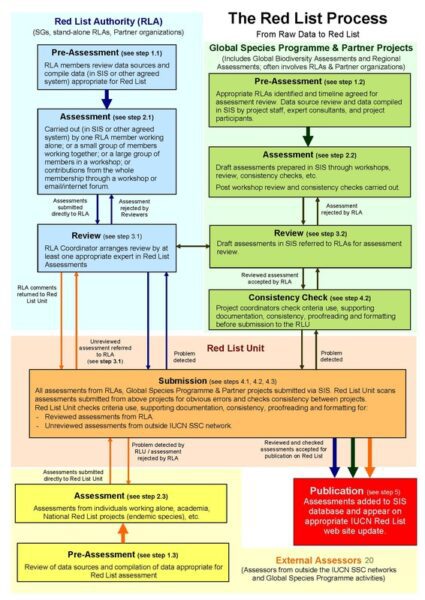- Zoology
- Daily Critter Facts
- For Teachers
- Study Guides
- Diseases & Parasites
- Contact


More than 44,000 species are threatened with extinction which is 28% of all assessed species on the planet. The IUCN stands for International Union for Conservation of Nature™. The IUCN was established on October 5, 1948 in the French town of Fontainebleau. As the first global environmental union. They brought together governments and civil societies with a single shared goal… to protect nature.
This organization has basically created a checklist of taxa that have undergone an extinction risk assessment using the IUCN Red List Categories and Criteria. Most of the assessments that appear on the Red List are performed by members of appointed Red List Authorities (RLAs), the Species Survival Commission (SSC), Red List Partners, or specialists working on IUCN-led assessment projects. This being said, assessments can basically be carried out by anyone who has sufficient knowledge of a species and submitted to IUCN for consideration.
There are several classifications listed within this organization:
- Not Evaluated
- Data Deficient
- Least Concern
- Near Threatened
- Vulnerable
- Endangered
- Critically Endangered
- Extinct in the Wild
- Extinct
But what do each of the classifications mean?
Not Evaluated
Not Evaluated (NE) species are not published on the IUCN Red List.
Data Deficient
This classification of (DD) is given when there isn’t enough information to assess a conservation status.
Least Concern
The classification of Least Concern (LC) is given if the plant or animal is abundant, widespread, and not threatened with extinction.
Near Threatened
Near Threatened (NT) is given when it has been evaluated against the criteria but does not qualify for Critically Endangered, Endangered, or Vulnerable currently, but is close to qualifying for or is likely to qualify for a threatened category in the not to distant future.
Vulnerable
If it has a high risk of extinction in the wild due to a population decline of 30 – 50% over the previous 10 years, or 3 generations; and/or a current population size of fewer than 1,000 individuals the subject is listed as Vulnerable (VU).
Endangered
When a subject has a high risk of extinction due to a population decline of 50 – 70% over the past 10 years, or a current population of less than 250 individuals that subject is listed as Endangered (EN).
Critically Endangered
This classification is given when it meets any of the criteria A – E for Critically Endangered (CE), and it is then considered to be facing an extremely high risk of extinction in the wild. A species is also classified as Critically Endangered if there are fewer than 50 mature individuals globally.
Extinct in the Wild
Extinct in the Wild (EW) is given when it is only known to survive in cultivation, captivity, or as a naturalized population outside of its normal historic range. This includes species that are kept in aquariums, zoos, or planted in pots, and/or no longer live in their traditional habitat.
Extinct
Lastly, the classification of Extinct (EX) defines when it is known only to survive in cultivation, in captivity or as a naturalized population (or populations) well outside their previous range.
This chart defines the process in classifying animals or plants within the IUCN’s database.

Critter Science aims to list the IUCN classification in each of the articles written.
